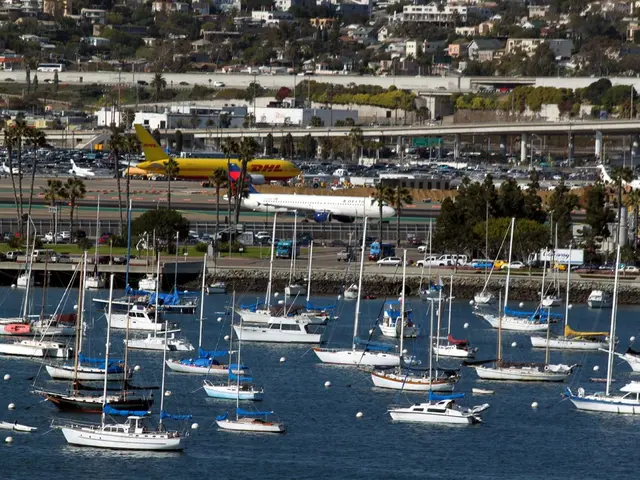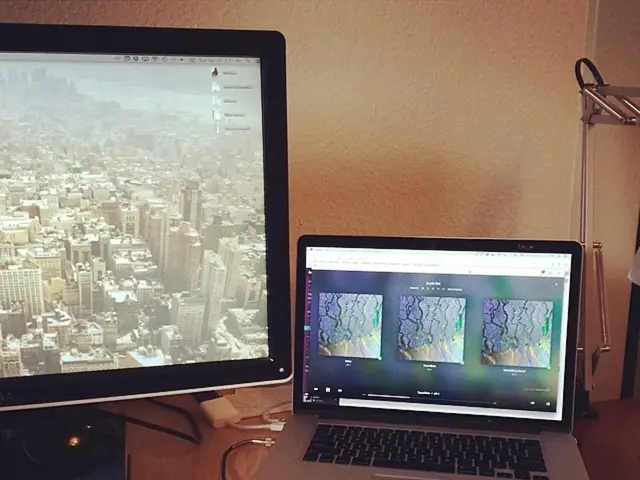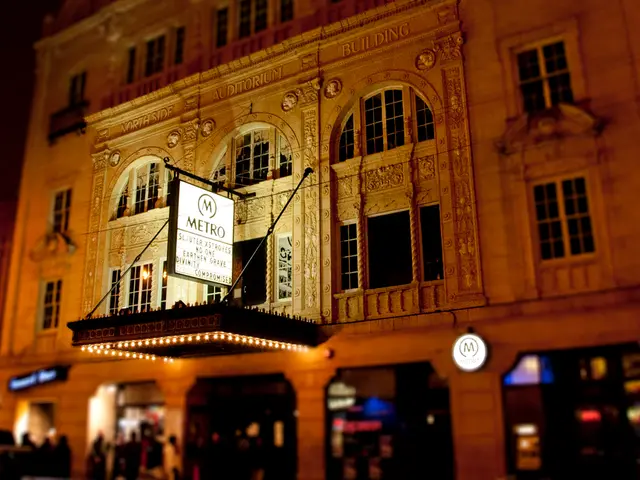Dharavi Rebuilding Initiative: Exploring the Extensive Transformation and Urban Renewal Plans in Mumbai's Dharavi District
Mumbai's Transformative Venture: The Dharavi Redevelopment Project
In the urban landscape of Mumbai, a stark contrast emerges between the glossy skyline of the Bandra Kurla Complex (BKC) and the vibrant chaos of Dharavi, Asia's largest slum. This bustling labyrinth is on the verge of a dramatic turnaround, orchestrated by the Dharavi Redevelopment Project.
spearheaded by Navbharat Mega Developers Pvt. Ltd (formerly known as Dharavi Redevelopment Project Pvt. Ltd), the ambitious venture seeks to enhance the lives of over a million individuals crammed within the 2.39 square kilometers of Dharavi. The project is a joint venture, with Adani Realty holding an 80% stake and the Maharashtra government retaining the remaining 20%.
Adani Realty emerged the highest bidder, pledging Rs 5,069 crore, surpassing DLF's offer of Rs 2,025 crore. The colossal project, estimated to cost around Rs 20,000 crore, aims to provide more than just housing. Its vision encompasses a future characterized by basic rights, including clean water, electricity, healthcare, and education.
However, Dharavi is more than a collection of shanties. It’s a pulsating microcosm, rich in history, culture, and economy. Migrant histories, Tamilian roots, Muslim leather artisans, Gujarati potters, and thriving businesses run by younger generations coexist within its confines.
The Project's Blueprint
SVR Srinivas, IAS, the CEO of the Dharavi Redevelopment Project, recently presented a master plan to the state government. This roadmap outlines a colossal project area of 108.99 hectares. Nearly half of this is earmarked for rehabilitation and renewal housing, while 47.95 hectares will be commercially developed. Facilities such as schools, museums, wellness centers, and religious complexes will occupy 10.88 hectares. The remaining space will support utilities, roads, and open public areas, expanding the project's footprint to 251.24 hectares.
Authorities have already surveyed over 79,000 households, with documentation completed for about 57,000. The project has commenced, with early construction activities taking place on an additional 47.5 acres of railway land in Matunga.
A Connectivity Revolution
Improving Dharavi's integration with Mumbai is critical, given the city's notorious traffic. Proposed changes include multiple underpasses under the Central and Harbour lines and new links to key arterial roads like Senapati Bapat Marg and the BKC-Chunabhatti Link Road. This "15-minute neighborhood" model aims to ensure every household has access to essential services within a walkable distance.
Finding Space for the Redevelopment
The redevelopment hinges on securing alternative land parcels for resettlement and infrastructure. As of now, only around 12% of the required 541.2 acres have been officially handed over. This includes 21 acres from the Agriculture and Dairy Department and 42.51 acres from Jamasp Salt Pan in Mulund. Other identified plots remain to be transferred, which are essential for successful relocation and preventing community displacement.
Overcoming Resistance for a Smooth Development
Despite meticulous planning, the project has encountered resistance in certain areas, particularly in key pockets like the 13 Compound, Kumbhar Wada, and private slum-encumbered lands. To ensure the project’s success, it’s crucial to address these trust deficits through transparency, consistent communication, and participatory planning.
- The Dharavi Redevelopment Project, a joint venture between Adani Realty and the Maharashtra government, seeks to transform Dharavi, India's largest slum, by providing more than just housing, aiming for a future with basic rights like clean water, electricity, healthcare, and education.
- Apart from housing, the project's vision encompasses commercially developed areas, facilities like schools, museums, wellness centers, and religious complexes, and spaces for utilities, roads, and open public areas.
- In the urban landscape of Mumbai, the Dharavi Redevelopment Project plans to create a "15-minute neighborhood" model, improving Dharavi's integration with Mumbai by building multiple underpasses, new links to key arterial roads, and ensuring every household has access to essential services within a walkable distance.
- To secure land for redevelopment and resettlement, the project has acquired only around 12% of the required 541.2 acres, including lands from the Agriculture and Dairy Department and Jamasp Salt Pan in Mulund. Other identified plots remain to be transferred for successful relocation and preventing community displacement.
- Despite meticulous planning, the project has faced resistance in certain areas, such as the 13 Compound, Kumbhar Wada, and private slum-encumbered lands. To ensure the project’s success, it is crucial to address these trust deficits through transparency, consistent communication, and participatory planning.
- The colossal Dharavi Redevelopment Project, estimated to cost around Rs 20,000 crore, has the potential to integrate business, industries like manufacturing, real-estate, and finance, contributing to Mumbai's economic growth and development.








